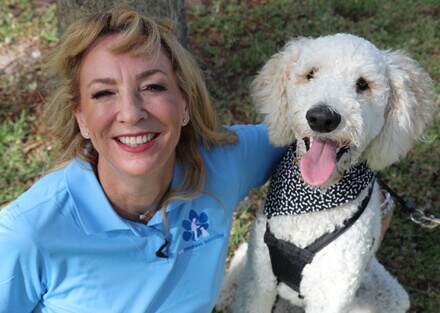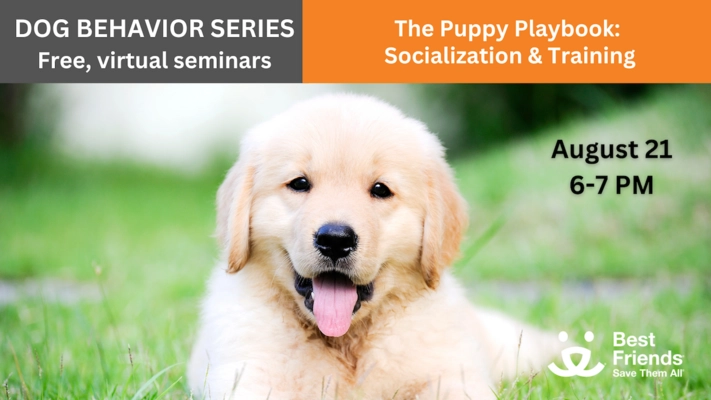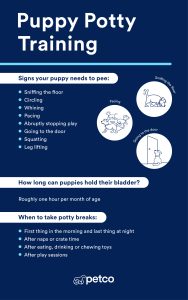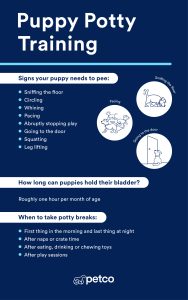Are you struggling to understand your dog’s behavior? Imagine having the tools to train your furry friend without spending a dime.
Free dog behavior training can help you build a stronger bond, solve common problems, and enjoy a happier life together. You’ll discover simple, effective techniques that anyone can use. Keep reading to unlock the secrets to a well-behaved dog—your best companion is waiting!
Benefits Of Free Dog Training
Free dog behavior training helps owners teach their dogs good habits. It improves dogs’ manners and obedience without spending money.
This type of training is easy to start and can fit many lifestyles. It supports both dogs and owners in growing together.
Cost Savings
Free dog training saves money on classes and trainers. You do not need to buy expensive equipment or pay fees.
With free training, you use simple tools and your time. This reduces the overall cost of raising a well-behaved dog.
Flexibility And Convenience
Free training lets you learn at your own pace. You can choose the best time and place for sessions.
This flexibility fits busy schedules and different learning styles. You can repeat lessons until your dog understands.
Building Stronger Bonds
Training your dog for free encourages more time together. It helps you understand your dog’s needs and behavior better.
Working with your dog builds trust and respect. This creates a happier relationship for both of you.

Credit: www.freepik.com
Common Dog Behavior Issues
Dogs are wonderful companions, but they can have behavior issues. Understanding these issues helps in training them better.
Addressing common problems like barking and chewing is important. It ensures a happy life for both dogs and owners.
Excessive Barking
Dogs bark to communicate. But sometimes, barking can become too much. This can be annoying and disruptive.
Training can help reduce barking. Identify the cause and address it to improve behavior.
- Loneliness can cause barking
- Lack of exercise leads to frustration
- Fear or anxiety increases barking
Chewing And Destruction
Chewing is normal for dogs, but it can damage items. Puppies chew to explore the world and relieve teething pain.
To control this, provide appropriate toys. Supervise them and teach what is safe to chew.
- Offer chew toys
- Keep items out of reach
- Use deterrent sprays
Aggression And Fear
Some dogs show aggression due to fear or lack of socialization. It is important to address these issues early.
Training and socialization can help. Building trust with your dog is key to reducing fear and aggression.
- Socialize with other dogs
- Use positive reinforcement
- Consult a professional if needed
House Soiling
House soiling is when dogs urinate or defecate indoors. This can be frustrating for owners.
Regular bathroom breaks and crate training can help. Establish a routine to prevent accidents indoors.
- Take dogs out regularly
- Watch for signs they need to go
- Reward them for doing it outside
Basic Training Techniques
Training your dog helps build good habits and a strong bond. Basic techniques teach your dog what you expect. These skills create a happy and safe environment for both of you.
Use simple methods that your dog can understand. Consistency and patience are keys to success. Start training early and keep sessions short and fun.
Positive Reinforcement
Positive reinforcement means giving your dog a reward for good behavior. This encourages your dog to repeat the action. Rewards can be treats, praise, or toys.
- Give treats immediately after the behavior
- Use a happy tone of voice
- Avoid punishment to keep training fun
- Reward small steps toward the goal
Clicker Training
Clicker training uses a sound to mark good behavior. The click sound tells your dog exactly when it did well. This helps dogs learn faster and with less confusion.
| Step | Action | Purpose |
| 1 | Make a clicking sound | Mark the desired behavior |
| 2 | Give a treat right after | Reward the dog |
| 3 | Repeat with the same behavior | Help dog connect click with reward |
Consistency And Patience
Training takes time and effort. Be patient and keep your commands consistent. Use the same words and signals every time. This helps your dog understand better.
Tips for Consistency and Patience:
- Train daily in short sessions
- Use clear, simple commands
- Stay calm even if progress is slow
- Celebrate small successes

Credit: k9ti.org
Creating A Training Routine
Training your dog helps build good habits and improves behavior. A clear routine makes training easier for both you and your dog.
Planning your sessions carefully will keep your dog interested and help them learn faster. Consistency is key to success.
Setting Realistic Goals
Set simple and clear goals for each training session. Avoid expecting too much from your dog at once.
Focus on one behavior at a time. Break big tasks into small, easy steps.
- Start with basic commands like sit or stay
- Increase difficulty slowly over time
- Be patient and adjust goals as needed
Short And Frequent Sessions
Keep training sessions short to hold your dog’s attention. Long sessions can make your dog tired or bored.
Train often, but for only a few minutes each time. This helps your dog learn without stress.
- Limit sessions to 5–10 minutes
- Train 2–3 times each day
- Give breaks between sessions
Tracking Progress
Keep a simple record of what your dog learns. This helps you see what works and what needs more practice.
Note down behaviors your dog knows and those that need improvement. Celebrate small successes to stay motivated.
- Write down commands your dog responds to
- Mark days when training happens
- Note any challenges or breakthroughs
Using Online Resources
Training your dog at home can be easy with the right online tools. Many websites and apps offer free help for dog behavior training. You can learn new skills anytime, anywhere.
Using online resources saves time and money. You get tips from experts and connect with other dog owners. This guide shows you the best free options to start training your dog today.
Free Video Tutorials
Video tutorials are a great way to see dog training in action. They show clear steps and tricks to teach your dog good behavior. You can pause and replay videos to learn at your own pace.
- Watch trainers demonstrate commands like sit and stay
- Learn how to fix common problems like barking or jumping
- Follow along with videos made for beginners
- Access videos anytime on your phone or computer
Training Apps
Apps help you track your dog’s progress and remind you to train daily. Many apps offer free features that guide you through exercises and tips. You can use apps to set goals and record your dog’s behavior.
| App Name | Main Features | Cost |
| Dog Trainer | Step-by-step lessons, reminders | Free |
| GoodPup | Video calls, progress tracking | Free basic plan |
| Pupford | Training videos, quizzes | Free access |
Community Forums
Forums let you talk with other dog owners and trainers. You can ask questions and share your experiences. Many forums have sections for specific problems and advice.
Popular forum topics include:
- House training tips
- Handling aggressive behavior
- Diet and exercise advice
- Training schedules and routines
Joining a forum helps you stay motivated and learn from others’ success stories.
Diy Training Tools
Training your dog at home can be fun and effective. Using simple tools you make yourself saves money. It also helps build trust between you and your dog.
Here are easy ideas for homemade treats, DIY clickers, and interactive toys. These tools make training sessions more enjoyable for your dog.
Homemade Treats
Healthy treats motivate your dog during training. You can make simple snacks with ingredients found at home. Avoid using anything toxic to dogs.
- Mix plain cooked chicken with sweet potatoes.
- Bake small pieces of apple with cinnamon (no seeds).
- Use plain pumpkin puree formed into small balls.
- Make frozen yogurt drops with plain yogurt.
- Offer small bits of carrot or green beans.
Diy Clickers
A clicker makes a consistent sound for training. You can build one using household items. This tool helps your dog learn commands faster.
Try this simple DIY clicker idea:
- Find a small metal lid or bottle cap.
- Attach it to a firm base like a piece of wood.
- Bend a paperclip to press the lid for a click sound.
- Practice pressing to get a sharp clicking noise.
Interactive Toys
Interactive toys keep your dog busy and sharp. You can make puzzles and games with simple materials. These toys encourage problem solving during playtime.
| Toy | Materials | How to Use |
| Treat Puzzle | Plastic bottle, treats | Fill bottle with treats, let dog roll it to get snacks. |
| Hide and Seek Box | Cardboard box, cups | Hide treats under cups, dog finds the correct cup. |
| Rope Tug Toy | Old t-shirt, scissors | Braid strips into a rope for tugging and chewing. |
Handling Setbacks
Training a dog takes patience and time. You may face setbacks along the way. These challenges are normal and part of the learning process.
Knowing how to handle these setbacks helps you stay calm and keep training your dog successfully.
Common Challenges
Dogs may show unwanted behaviors like chewing, barking, or ignoring commands. These issues can frustrate trainers.
- Distractions during training sessions
- Lack of consistency in commands
- Dog’s age and breed affecting learning speed
- Health problems causing behavior changes
Staying Motivated
Training takes effort. Staying motivated helps you and your dog succeed.
| Tip | How It Helps |
| Set small goals | Make progress feel achievable |
| Reward yourself | Keep positive feelings about training |
| Track progress | See improvements over time |
| Join a support group | Share experiences and advice |
When To Seek Professional Help
Some problems need expert help. A professional trainer or behaviorist can provide guidance.
- If your dog shows aggression
- If training does not improve behavior
- If you feel overwhelmed or unsure
- For special needs or anxiety issues
Maintaining Long-term Behavior
Training your dog is just the start. Keeping good behavior over time is key. Consistent effort helps your dog stay well-behaved.
Long-term behavior means your dog listens, even as time passes. This needs patience and regular practice.
Reinforcement Over Time
Reward your dog often at first. This teaches them what you want. Over time, give rewards less often but stay consistent.
Keep praising good actions to remind your dog. This helps habits stick and reduces bad behavior.
- Use treats or toys for good behavior
- Give verbal praise or petting
- Practice commands daily but short
- Gradually reduce treats but keep praise
Adapting To Changes
Dogs face new places, people, and routines. Help your dog adjust by staying calm and patient.
Change your training if needed. Different situations may need new rules or rewards.
- Notice your dog’s reactions to change
- Keep training sessions short and positive
- Introduce new environments slowly
- Adjust commands if the old ones don’t work
Socialization Tips
Meeting other dogs and people helps your dog behave well. Social skills reduce fear and aggression.
Use calm, friendly meetings to build confidence. Always watch your dog and stop if they seem stressed.
- Take your dog to parks or pet-friendly places
- Invite friends with dogs for playdates
- Reward calm behavior around others
- Practice commands during social events

Credit: www.moderndogri.com
Frequently Asked Questions
What Is Free Dog Behavior Training?
Free dog behavior training involves teaching your dog basic commands and manners without cost. It uses online resources, community classes, or DIY methods to improve your dog’s behavior effectively.
How Can I Start Dog Training At Home For Free?
Begin with simple commands like sit and stay using positive reinforcement. Use treats, patience, and consistency daily to teach your dog basic behaviors effectively.
Are Free Dog Training Methods Effective?
Yes, free training methods can be effective if done consistently. Using proven techniques, patience, and positive reinforcement helps your dog learn good behavior without professional fees.
What Tools Do I Need For Free Dog Training?
You need treats, a leash, a clicker (optional), and patience. These simple tools help reinforce commands and make training sessions productive and enjoyable.
Conclusion
Training your dog does not have to cost money or be hard. Free dog behavior training offers simple steps anyone can try at home. Consistency and patience help your dog learn good habits faster. Small daily efforts build trust and improve behavior.
Enjoy the time spent teaching and bonding with your pet. Good training makes life easier for both you and your dog. Start today and see positive changes soon. Your dog will thank you with love and obedience.

Emily Barker is the founder of ChillDogLife.com, a space dedicated to helping pup parents discover the best dog products, lifestyle tips, and cozy ideas for happier homes.
A lifelong dog lover, Emily combines her passion for pets with a knack for research to share trusted recommendations on everything from toys and furniture to health and everyday care.
Her goal is simple: to make life easier, stylish, and more joyful for dogs and the people who love them.







